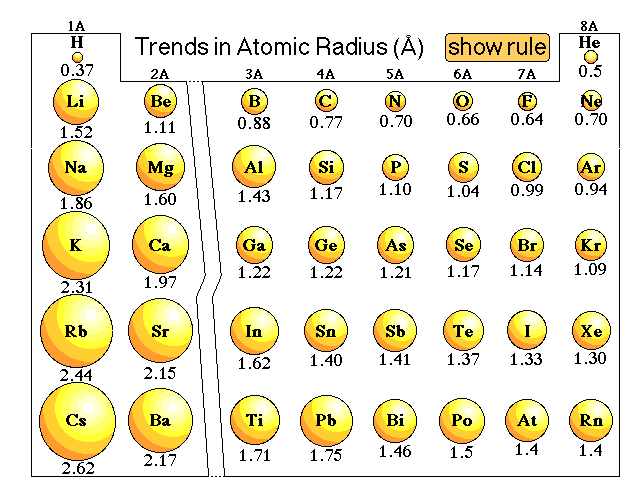Ask questions which are clear, concise and easy to understand.
Ask QuestionPosted by Rishu Singh 5 years, 3 months ago
- 1 answers
Posted by Pushpraj Singh Rajput 5 years, 3 months ago
- 1 answers
Gaurav Seth 5 years, 3 months ago
- When amide is treated with Br2 in aqueous or ethanolic solution of NaOH, degradation of amide results in formation of primary amine.
- Primary amine formed contains one carbon less than the number of carbon atoms in amide.
O
∣∣
R−C−NH2+Br2+4NaOH⟶R−NH2+Na2CO3+2NaBr+2H2O
Mechanism:
- Base attacks amide deprotonating it and generating anion.
- Anion reacts with Br2 forming bromoamide.
- Deprotonation of bromoamide occurs forming bromoamide anion which undergoes rearrangement forming isocyanate.
- Isocyanate forms carbamic acid by addition of H2O molecules.
- Decarboxylation of carbamic acid occurs forming primary amine.
How satisfied are you with the an
Posted by Tanya Gupta 5 years, 3 months ago
- 1 answers
Gaurav Seth 5 years, 3 months ago
Kohlrausch law of independent migration of ions: The law states that limiting molar conductivity of an electrolyte can be represented as the sum of the individual contributions of the anion and cation of the electrolyte.

Posted by Iqbal Singh 5 years, 3 months ago
- 2 answers
Yogita Ingle 5 years, 3 months ago
Steric hindrance is when the large size of groups within a molecule prevents chemical reactions which can take place in related molecules with smaller groups. Steric hindrance is also a reason for protection of some groups from unwanted chemical modifications.
Vikas Shukla 5 years, 3 months ago
Posted by Iqbal Singh 5 years, 3 months ago
- 3 answers
Iqbal Singh 5 years, 3 months ago
Iqbal Singh 5 years, 3 months ago
Vikas Shukla 5 years, 3 months ago
Posted by Kumkum Gupta 5 years, 3 months ago
- 2 answers
Posted by Deepak . 5 years, 3 months ago
- 3 answers
Posted by Shivprasad Jadhav 5 years, 3 months ago
- 0 answers
Posted by Shivprasad Jadhav 5 years, 3 months ago
- 1 answers
Posted by Sushmita Kaushik 5 years, 3 months ago
- 2 answers
Yogita Ingle 5 years, 3 months ago
Atomic radius decreases across a period because valence electrons are being added to the same energy level at the same time the nucleus is increasing in protons. The increase in nuclear charge attracts the electrons more strongly, pulling them closer to the nucleus.
Explanation:
The following diagram shows the periodic trends of atomic radius of the representative elements (main group elements) for the first six periods.

Posted by Shubham Ranjan 5 years, 3 months ago
- 1 answers
Gaurav Seth 5 years, 3 months ago
The dipole moment of chlorobenzene is less than cyclo hexyl chloride as in chloro benzene C-Cl bond is sp2 hybridised where as in cyclohexyl chloride the C_cl bond is Sp3 Hybridised . as sp2 has more s character and more electronegative than sp3. Chlorobenzene is less polar than cyclohexyl chloride.
Posted by Janvi Sharma 5 years, 3 months ago
- 4 answers
Souparnika Gopakumar 5 years, 3 months ago
Posted by Sandhya Bhandari 5 years, 3 months ago
- 0 answers
Posted by Aryan Singh 5 years, 3 months ago
- 1 answers
Yogita Ingle 5 years, 3 months ago
Carboxylic acid are more acidic than phenols because the negative charge in carboxylate anion is more spread out as compared to the phenoxide ion as there are two electronegative O-atoms in carboxylate anion in comparison to one in phenoxide ion. ... So Formic acid is more acidic than acetic acid
Posted by Khushi Rawat 5 years, 3 months ago
- 1 answers
Deepak . 5 years, 3 months ago
Posted by Iqbal Singh 5 years, 3 months ago
- 5 answers
Posted by Iqbal Singh 5 years, 3 months ago
- 2 answers
Iqbal Singh 5 years, 3 months ago
Posted by Ekdoteen Charpanch 5 years, 3 months ago
- 4 answers
Posted by Gungun Arya Gupta 5 years, 3 months ago
- 5 answers
Atul Sharma 5 years, 3 months ago
Iqbal Singh 5 years, 3 months ago
Posted by Gungun Arya Gupta 5 years, 3 months ago
- 3 answers
Iqbal Singh 5 years, 3 months ago
Posted by Gungun Arya Gupta 5 years, 3 months ago
- 5 answers
Iqbal Singh 5 years, 3 months ago
Iqbal Singh 5 years, 3 months ago
Posted by Iqbal Singh 5 years, 3 months ago
- 2 answers
Posted by Iqbal Singh 5 years, 3 months ago
- 5 answers
Posted by Iqbal Singh 5 years, 3 months ago
- 5 answers
Iqbal Singh 5 years, 3 months ago
Posted by O The 5 years, 3 months ago
- 2 answers
Yogita Ingle 5 years, 3 months ago
Ferromagnetism – The substances which are strongly attracted by the magnetic field & show permanent magnetism even when the magnetic field is removed are known as ferromagnetic substances.When there is spontaneous alignment of magnetic moments of domain in the same direction,ferromagnetism happens
Posted by Rainsy Dhakad 5 years, 3 months ago
- 2 answers
Nidhi Sahu 5 years, 3 months ago
Tanya ?? 5 years, 3 months ago
Posted by Vaibhav Tomar 5 years, 3 months ago
- 1 answers
Tanya ?? 5 years, 3 months ago
Posted by Arshdeep Aulakh 5 years, 3 months ago
- 0 answers
Posted by 12M Smriti Parashar 5 years, 3 months ago
- 1 answers
Tanya ?? 5 years, 3 months ago

myCBSEguide
Trusted by 1 Crore+ Students

Test Generator
Create papers online. It's FREE.

CUET Mock Tests
75,000+ questions to practice only on myCBSEguide app
 myCBSEguide
myCBSEguide
Akanksha Kumari 5 years, 3 months ago
1Thank You